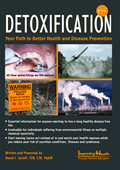FOODBORNE DISEASE OUTBREAKS RISING IN U.S.
By
NWV News Writer Jim Kouri
Posted 1:00 AM Eastern
March 19, 2012
© 2012 NewsWithViews.com
Foodborne disease outbreaks linked to imported food rose in fiscal years 2009 and 2010, with close to half of the outbreaks implicating food imported from areas that had no prior association with outbreaks, according to researchers from the Centers for Disease Control and Prevention in a report released on Wednesday.
While billions of dollars are spent each year on national security and public safety in the United States, there has been little progress by the Homeland Security Department, the Health and Human Services Department and others charged with the safety and well-being of American citizens to protect the U.S. food supply and imports.
Imported food makes up a substantial and growing portion of the U.S. food supply and, considering the health and safety concerns of keeping American's safe, Washington insiders seem oblivious to that part of protecting American citizens, according to the March 14, 2011 report.
To ensure imported food safety, federal agencies must focus their resources on high risk foods and coordinate efforts, according to a report released by the Government Accountability Office.
The report, submitted to the US Congress and obtained by NewsWithViews.com assesses how the Department of Homeland Security's Customs and Border Protection (Border Patrol), the Food and Drug Administration, and the U.S. Department of Agriculture's Food Safety and Inspection Service are addressing challenges in overseeing the safety of imported food.
"It's too early to say if the recent numbers represent a trend, but CDC officials are analyzing information from 2011 and will continue to monitor for these outbreaks in the future," said Hannah Gould, Ph.D., an epidemiologist in CDC's Division of Foodborne, Waterborne and Environmental Diseases and the lead author of the study.
US agriculture generates more than $1.5 trillion per year in economic activity and provides an abundant food supply for Americans and others. There are continuing concerns about the vulnerability of US agriculture to the deliberate introduction of animal and plant diseases by those wishing to harm American citizens, according to the CDC researchers.
"The big problem is money spent to monitor food products being imported into the United States. So far, the budget for food safety is minimal when compared to other government programs. For example, politicians push for vaccinating millions of Americans against what they characterize as a deadly flu epidemic, yet they do not seem concerned over a very real threat to all Americans -- contaminated food," said political strategist Mike Baker.
CDC experts reviewed outbreaks reported to CDC's Foodborne Disease Outbreak Surveillance System from 2005-2010 for implicated foods that were imported into the United States. During that five-year period, 39 outbreaks and 2,348 illnesses were linked to imported food from 15 countries. Of those outbreaks, nearly half (17) occurred in 2009 and 2010. Overall, fish (17 outbreaks) were the most common source of implicated imported foodborne disease outbreaks, followed by spices (six outbreaks including five from fresh or dried peppers). Nearly 45 percent of the imported foods causing outbreaks came from Asia.
"As our food supply becomes more global, people are eating foods from all over the world, potentially exposing them to germs from all corners of the world, too," Gould said. "We saw an increased number of outbreaks due to imported foods during recent years, and more types of foods from more countries causing outbreaks."
Gould
warned that the findings likely underestimate the true number of outbreaks
due to imported foods as the origin of many foods causing outbreaks
is either not known or not reported.
"We need better - and more - information about what foods are causing
outbreaks and where those foods are coming from," Gould said. "Knowing
more about what is making people sick, will help focus prevention efforts
on those foods that pose a higher risk of causing illness."
Recently, the Food and Drug Administration has stepped up its efforts to conduct environmental assessments to determine the root cause of outbreaks. With lessons learned from outbreaks, measures will be taken to prevent such outbreaks in the future. The newly enacted FDA Food Safety Modernization Act is also a major step in establishing a prevention based food safety system that would address domestic as well as imported foods. CDC, FDA and USDA will continue to work together to prevent foodborne illness and stop harmful products from entering commerce.
| Subscribe to the NewsWithViews Daily News Alerts! |
In particular, through its Beyond Our Borders initiative, FDA is pushing the US government to station investigators and technical experts in China, Europe, and India, to provide technical assistance and gather information about food manufacturing practices to improve risk-based screening at U.S. ports.
According to FDA, inspectors will analyze food shipments using criteria that include a product's inherent food safety risk and the importer's violation history, among other things, to estimate each shipment's risk. A pilot test indicated that the system improved FDA's ability to identify products it considers to be high risk while allowing a greater percentage of products it considers low risk to enter U.S. commerce without a manual review.
© 2012 NWV - All Rights Reserved











 Share
This Article
Share
This Article





